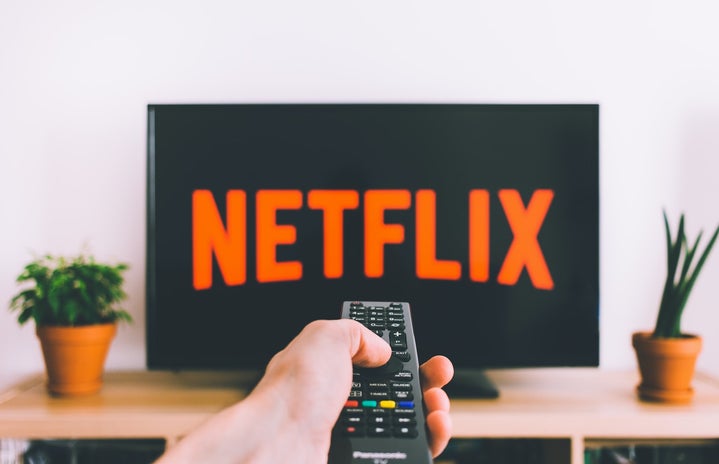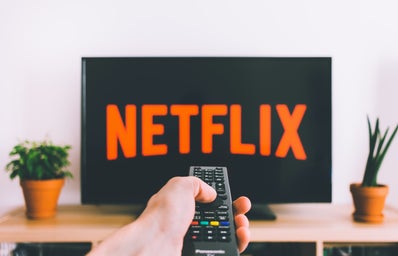Marvel fans have been in a frenzy this past week after noticing a memo above all the Marvel Television series on Netflix stating their removal from the platform on February 28th. Netflix’s decision to blip these original TV shows, which include Daredevil, The Punisher, Jessica Jones, Iron Fist, Luke Cage and the mini-series The Defenders, has many fans wondering about the future of these characters. This decision seems odd on Netflix’s end because viewership in these interconnected shows recently went up after Daredevil actor Charlie Cox made a cameo in Spiderman: No Way Home two years after his show was canceled. With Netflix having just increased their subscription price, what is going on with the removal of these shows?
A few days after the revelation spread like wildfire on social media, Netflix released a statement stating as of midnight February 28th the rights to all of these characters will revert back to Disney. It seems like Disney wants to bring these characters back into their possession to add them to the MCU. Before Marvel knew the shows were going to gain popularity with fans on streaming sites like Netflix, they created the Marvel Television division in 2010, which was responsible for the creation of the Marvel TV series. At the time Marvel was not fully aware of the huge universe they were cinematically able to create, so their need for collectiveness was not as important at that time.
The History of Marvel Television
By 2015, Marvel Television was airing Agent of S.H.I.E.L.D, a show based on the comic peacekeeping spy agency, and the spin-off series Agent Carter following Peggy Carter her life after Steve Rogers, on ABC. That same year, Disney and Netflix collaborated to create live-action series based on Daredevil, Jessica Jones, Iron Fist and Luke Cage. By 2017, all of those characters would team up in the limited series The Defenders, and The Punisher was set to get its own series after appearing in the second season of Daredevil. The downfall was quick; by October of 2018 Netflix announced it was canceling Iron Fist, Luke Cage and Daredevil after their second seasons. Shortly after, in February of 2019, Netflix canceled Jessica Jones and The Punisher. By November of that year, all series had been canceled on Netflix. Marvel Television folded into Marvel Studios and started helping them make series for their recently launched platform Disney+. As my film teacher would say, it’s all just a bunch of confusing contract deals.
So what does this mean for these past series? In 2022, Netflix and Disney no longer hold a partnership, but with the new rise in popularity of these series, the genius conglomerate of Disney must know the new home for these shows. The first obvious option is Disney+. Marvel fans love the cohesiveness among its characters, so having these shows alongside the rest is nothing but a great marketing move on Disney’s part. The cameo of Daredevil in Spiderman and KingPin in the Hawkeye series proves Marvel’s intentions to integrate these characters into the MCU. But having the Marvel content separated is not unheard of, with none of the Spidermen being available on Disney+ due to shared ownership with Sony. Disney does have a second option to add these series to Hulu, which they own and is a place for more adult content. This adds to the overall question of the rating in regards to new Marvel content with the creators now exploring more genres and styles.
What will be the rating of future Marvel projects?
For example, the upcoming series MoonKnight arrives on Disney+ on March 30th. After the official trailer was released, fans were excited at the evident increase in violence, hoping the series was going to gain a TV-MA rating like the ones on Netflix. With all the action and violence in Marvel movies, the distinction in ratings can be confusing. In terms of its series, there are two major categories:TV-14, which shows like Loki, Wandavision and Hawkeye all fall into, and TV-MA, which all of the Netflix series hold.
The main difference between these two ratings is in their wording, with TV-14 allowing intense violence but TV-MA allowing graphic violence, which includes realistic imagery, specifically in terms of blood and gore. Marvel adding these violent shows to their family-friendly streaming service does seem like a controversial move, but Marvel must be aware that many of its audience members are now in an older age bracket. I saw Captain America with my mom in theaters in elementary school and now have seamlessly transitioned to venturing out to see every single Marvel release this past year with my college roommates. Marvel cares about their characters, their legacy and their fans. A perfect example is with the multiverse. Ever since the 2018 film Spider-Man: Into the SpiderVerse was released, fans on the internet have been begging for a spider crossover with Tom Holland, Andrew Garfield and Tobey Maguire which Marvel gracefully served in 2021. The films’ Twitter pages recently released a photo of the three actors recreating the popular meme of the three Spiderman’s pointing at each other from a 1960s Spiderman, which appears in the Into the SpiderVerse post-credit scene.
Is this universe expanding too far?
With all this being said, the MCU is expanding at a rate that might be boarding a line of derailing. There are the Avengers, the world of Spiderman and Thor, newly gained realms from Eternals, witches of Wandavision, soon vampires, multiple universes in which different characters like Venom exist, and the Doctor Strange trailer hinting at the addition of the X-Men. Marvel needs to be cautious of expanding the universe too far beyond comprehension and creating more content than the public can keep up with. With the comics’ original tradition of millions of different plot lines, romantics, alternate universes and different deaths of the same character, alongside characters who never die, there is only so much technology can do and actors can only age so quickly.
Marvel’s many phases of ownership, creating new shows, etc have proved their ability to plan ahead. One of my favorite examples is the dream sequence Wanda planted in the six Avengers’ minds in Age of Ultron back in 2015, all eventually happening by the end of Endgame in 2019. Marvel at times has patched up some unexplainable mistakes, like Hela pushing over the Infinity Gauntlet calling it fake after it had previously appeared as an Easter Egg in an earlier Thor movie, prior to Marvel’s decision to add Thanos to the plot. Some rewrites were not as successful like the explanation behind how Nick Fury lost his eye or the age jump in Wanda’s character. Whatever it is that Marvel is planning, I am excited to see.
In regards to the series leaving Netflix, I’m sure within this month Disney will have announced where their new homes are. They might be holding off until the end of the month after the release of MoonKnight — after rumors have been going around about The Punisher making an appearance. What I do know for sure is even with the few slip-ups Marvel has had in cohesiveness, the love fans have for these movies and characters has never slipped up.
Update: On March 1st, Marvel made an announcement stating that all of their series on Netflix will be transferring to Disney+ on March 16.


